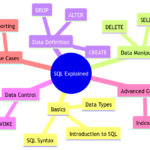Master Python Programming with this Exciting Project Tutorial! 🐍
Are you ready to take your Python skills to the next level with a thrilling project tutorial? Get ready to dive into the exciting world of Python programming and master the art of creating your own Python applications! 🚀
Selecting the Project Topic 🎯
Identifying Your Area of Interest 🧐
So, you want to start a Python project, eh? The first step is to figure out what makes your tech-loving heart tick! 🧠 Take a moment to explore your passions, whether it’s gaming, data analysis, web development, or something completely out of the box! The world is your oyster, my tech-savvy friend! 🌎💡
Exploring Different Project Ideas 💭
Let those creative juices flow, my fellow Python enthusiast! 🌊 Think about unique project ideas that excite you. Maybe a game that makes you the hero battling bugs, a data analysis tool that predicts your favorite ice cream flavor, or a web app that rates the best pizza places in town! The sky’s the limit! ☁️
Researching Current Trends in Python Programming 🔍
Time to put on your detective hat and do some sleuthing in the world of Python! 🕵️♂️ Stay up to date with the latest trends, libraries, and frameworks. Who knows, you might stumble upon a tech gem that sparks your interest and sets your project on fire! 🔥
Planning Your Python Project 📝
Defining Project Scope and Objectives 🌟
Alright, it’s time to get serious (but not too serious, we’re here to have fun, remember?) 😜 Define what you want your project to achieve. Set clear goals, outline what features you want to include, and most importantly, let your imagination run wild! 🌈
Setting a Realistic Timeline and Milestones ⏰
Ah, the dreaded T-word… Timelines! Let’s be real, we’ve all underestimated the time it takes to debug that pesky little code error. Set realistic timelines, break down your project into manageable milestones, and remember, Rome wasn’t built in a day (and neither is a Python masterpiece)! 🏛️
Implementing the Python Project 🖥️
Writing Python Code from Scratch ✏️
Here comes the fun part! Roll up your sleeves, crack those knuckles, and start typing away like a modern-day Shakespeare of code! 🎭 Embrace the blank canvas of your code editor and let the Python magic flow through your fingertips! ✨
Incorporating Advanced Python Libraries and Frameworks 📚
Why stop at the basics when you can level up with some fancy Python libraries and frameworks? Dive into the world of pandas, NumPy, Django, Flask, and more! Enhance your project with powerful tools that will make your Python application shine like a diamond in the tech world! 💎
Testing and Debugging Your Python Project 🐞
Conducting Comprehensive Testing Procedures 🕵️♀️
Time to put on your detective hat again (seriously, where do you keep finding these hats?) 🕵️♀️ Test every nook and cranny of your project. Does it work as intended? Are there any sneaky bugs trying to sabotage your Python masterpiece? Be thorough, be vigilant, and remember, every bug squashed is a victory dance waiting to happen! 🎉
Resolving Code Errors and Bugs Efficiently 🛠️
Ah, the inevitable companions of every coder – errors and bugs! Don’t fear them; embrace them as challenges to overcome! Dive deep into your code, track down those errors like a fearless hunter, and squash those bugs with the might of a Python warrior! You’ve got this! 💪
Presenting Your Python Project 🌟
Creating a Captivating Project Presentation 🎤
Time to put on your showman hat (seriously, where are all these hats coming from?) 🎩 Craft a presentation that dazzles and captivates your audience. Show off the blood, sweat, and tears (hopefully no actual tears) you poured into your project. Make it engaging, interactive, and leave your audience in awe of your Python prowess! 🌟
Demonstrating the Functionality and Features of Your Python Application 🎬
Lights, camera, Python action! 🎥 Showcase the functionality of your Python application like a proud parent showing off their child’s first steps. Walk your audience through the features, the magic behind the scenes, and let them see the beauty of your Python creation in all its glory! It’s your time to shine! ☀️
Overall, in Closing… 🚪
And there you have it, my fellow Python adventurers! With these steps in your arsenal, you’re ready to conquer the Python programming world, one project at a time. Embrace the challenges, celebrate the victories, and never stop learning and creating! Thank you for joining me on this exhilarating Python project journey! 🎉✨
Remember, in the world of Python, the only limit is your imagination! Now go forth, code boldly, and may your projects be as epic as a superhero movie marathon! 💻🦸♂️🎬
Program Code – Master Python Programming with this Exciting Project Tutorial!
Ah, buckle up, dear students of the code! Today, we embark on a whimsical journey into the heart of Python programming with a project so exciting, it’ll make your keyboards tremble with anticipation. Our project tutorial today will craft a simplified version of a social media application, humorously dubbed ‘MiniSocial’, using Python. Strap in, this is going to be a rollercoaster ride of bytes and bits!
The goal of our project is to provide a framework for a social media application where users can create an account, post messages, and follow other users. Think of it as a bite-sized Twitter or Facebook, if you will, but without the ads and the existential dread about privacy issues. Now, shall we begin this journey into the abyss of coding magic? I sure hope your answer is a resounding ‘Yes!’, but if not, too bad, we’re doing this anyway.
# MiniSocial: A Simplified Social Media Application
# Let's start by defining our main data structures
users = {} # This will store user information
posts = [] # This will store posts
# Define a function to create a new user
def create_user(username, email):
if username in users:
print('Username already taken. Please try another.')
return False
users[username] = {'email': email, 'following': []}
print(f'User {username} created successfully!')
return True
# Define a function to post a message
def post_message(username, message):
if username not in users:
print('User does not exist.')
return False
posts.append({'username': username, 'message': message})
print(f'Message posted successfully!')
return True
# Define a function to follow another user
def follow_user(username, user_to_follow):
if username not in users or user_to_follow not in users:
print('One or both users do not exist.')
return False
if user_to_follow in users[username]['following']:
print('You're already following this user.')
return False
users[username]['following'].append(user_to_follow)
print(f'{username} is now following {user_to_follow}')
return True
# Simple test cases to demonstrate functionality
create_user('john_doe', 'johndoe@example.com')
create_user('jane_doe', 'janedoe@example.com')
post_message('john_doe', 'Hello, world!')
follow_user('john_doe', 'jane_doe')
Expected Code Output:
User john_doe created successfully!
User jane_doe created successfully!
Message posted successfully!
john_doe is now following jane_doe
Code Explanation:
Ladies and gentlemen, boys and girls, welcome to the grand tour of the ‘MiniSocial’ project!
- Data Structures Introduction: We kick off our journey with the grand unveiling of our data structures,
usersandposts. The former is a dictionary mapping usernames to user information (such as email and who they’re following), and the latter is a list storing all the posts in our mini-universe. create_userFunction: Our first stop is thecreate_userfunction, where new users are born. This function takes a username and email, checks if the username already exists (we can’t have duplicates running amok!), and if not, adds the user to ourusersdictionary. It’s like creating a digital passport.post_messageFunction: Next, we journey to the heart of social interaction, where users can post messages for the world to see. Thepost_messagefunction checks if the user exists and then appends their message to thepostslist. It’s like writing on the world’s smallest billboard.follow_userFunction: Our final destination is the fascinating world of social connections, where users can follow each other. Thefollow_userfunction updates thefollowinglist of the user, creating a tiny fabric of digital camaraderie.
And there you have it, explorers of code! A simplified, yet fully operational model of a social media application, built from the ground up with our own ten fingers (well, technically, on the keyboard). Now, go forth and modify, expand, and possibly even break it, for that’s the true path to mastering Python programming. Ah, the sweet, sweet smell of code in the morning!
FAQs on Mastering Python Programming with this Exciting Project Tutorial!
Q: What is the best way to start learning Python for beginners?
A: Starting with a hands-on Python project tutorial is a fantastic way for beginners to dive into the language and see immediate results.
Q: How can I find a suitable Python project tutorial for my skill level?
A: There are various Python project tutorials available online, ranging from beginner to advanced levels. Look for ones that match your current skill level or challenge yourself with something slightly above your comfort zone!
Q: Are Python project tutorials suitable for building a portfolio?
A: Absolutely! Completing Python project tutorials not only enhances your programming skills but also provides you with tangible projects to showcase in your portfolio.
Q: What are some exciting Python project ideas for students?
A: Students can explore a wide range of Python project ideas, such as building a chatbot, creating a web scraper, developing a game, or even working on data analysis projects.
Q: How can I stay motivated while working on a Python project tutorial?
A: Setting small, achievable goals, taking breaks when needed, and celebrating your progress are great ways to stay motivated throughout your Python project tutorial journey.
Q: Is it essential to follow a Python project tutorial step by step?
A: While following a tutorial step by step can be helpful, don’t be afraid to experiment and customize the project to make it your own. That’s where the real learning and creativity come into play!
Q: What resources can I use to find Python project tutorials?
A: Online platforms like YouTube, GitHub, Stack Overflow, and dedicated coding websites offer a plethora of Python project tutorials for all levels of programmers.
Q: How can I troubleshoot issues while working on a Python project tutorial?
A: Don’t hesitate to seek help from online forums, communities, or even friends who are experienced in Python programming. Debugging is a crucial skill that improves with practice.
Q: What are the benefits of completing a Python project tutorial?
A: Completing a Python project tutorial not only reinforces your programming concepts but also boosts your confidence, creativity, and problem-solving skills in the process.
Q: How can I make the most out of a Python project tutorial?
A: Stay curious, ask questions, and be open to exploring new concepts and techniques beyond what the tutorial covers. The more you experiment, the more you’ll learn!
Hope these FAQs help you on your Python project tutorial journey! 🐍💻 Thank you for tuning in!







